QuestionI have a 6 month old what we think is a female. She is being spayed on Monday. We just got a 8 week old not sure of the sex yet. Their cages are close to eachother, have put the new bunny in a little run, while the other is outside of the run. She sniffs and makes a weird noise in her throat. Is that normal. We put them together briefly and the older one pokes the baby pretty hard. Do you have any suggestions as to get these two together. We have had the new one for 3 days and this was the first time we put them together. Am afraid that the older one will harm the baby. Would it be better to not put them together until the little one is older. Would appreciate any advice you can give.
Thanks, Theresa
AnswerHi Theresa,
I'll give you short answers to your main questions and go into detail further down.
I don't know which one by your wording is making the noise, I am assuming the older one is, and that would be probably a little grunt noise.
I would not put them together yet, they should remain separated. Do not place them together again. They should be separated enough so that they cannot bite each other through cages or gates or the run you have. You may need to 'double gate" them in order to make sure they can't bite each other through common gate areas. It would be better to wait for several reasons.
It can be difficult bonding two female rabbits. You should NEVER place two unspayed females together. You also should never place two rabbits that don't know each other and are used to each other in the same space together. They will fight and it can be vicious and major injuries can result, very quickly. Rabbits have lost eyes and ears and have had severe bites, and that can happen in a matter of seconds.
Further, you shouldn't place very young rabbits with adult rabbits. Size differences and the younger rabbits' lack of understanding of how to get along with another rabbit can make for a fight/abuse condition. In this case, your younger rabbit (8 weeks old) will not hit maturity for another 8-10 weeks, on average, and then she must be spayed before even thinking about attempting to bond them.
Please also keep in mind that it takes rabbits (male and female) about a month or so after spay/neutering for their hormone levels to drop down so that their behavior becomes more friendly (less agressiveness, territorial-ness). This is important because you will need to wait at least a month after the baby rabbit is spayed for her hormone levels to drop. You don't want to place a newly-fixed rabbit (with high hormone levels) into the same space as your already fixed female (with low hormones) as the smaller rabbit may provoke a fight.
A fact of nature is unspayed females in the same space will fight. That is why it should not be done, and why a month or so waiting period before bonding is needed for spayed rabbits.
You are astute to believe that the older one would harm the baby. It is basically like throwing in a fixed rabbit (in this case the sexually immature rabbit is like the fixed rabbit) in with an unaltered sexually mature rabbit. This is a recipe for disaster.
So, definitely keep them separate, until both are fixed, and both have been fixed for over a month and their behavior has gone back to what they were before hitting sexual maturity. Then you can begin the bonding process, and it can be slow and take weeks to months. It may not work out, and they may need to be separated permanently.
Basically for bonding you need a NEUTRAL area in the house that NEITHER has been in. This really is critical because neither of them consider it their own space. Some people use a basement room neither have been in, some a bathroom they are never in, even a bathtub. Basically the first dates are short, 10-15 minutes. A successful date is one with no fighting (actual biting, boxing with paws, kicking). there probably will be chasing, some mounting, a little fur pulling - not full-out biting, and some investigation of the other - this is them sorting out who will be the dominant rabbit, and this is something that must happen. It makes us chew our nails but it has to occur. (This is different than actual fighting.) Hopefully you'll see them grooming themselves, flopped on the floor, maybe they can eat some hay from the same pile. As the dates progress they can go longer, but you still need to be there supervising and be ready to separate if real fighting breaks out. If you see ears back, head down and growling, stop it before fighting starts. You can either call off the date there and pick one up or try to spritz in the face with a spray bottle of room temp water (there are mixed opinions with this).
The House Rabbit Society (www.rabbit.org) has a lot of good info on bonding rabbits - lots of articles there by many folks who have done a LOT of bunny dates. I would also suggest browsing their knowledge base. Also there is a great book by Marinell Harriman called the "House Rabbit Handbook" which you can find now at the larger chain bookstores. They just came out with an updated version and the ISBN# is: 978-0-940920-17-0
Feel free to ask any other questions along the way. Let me know how it turns out.
Lee

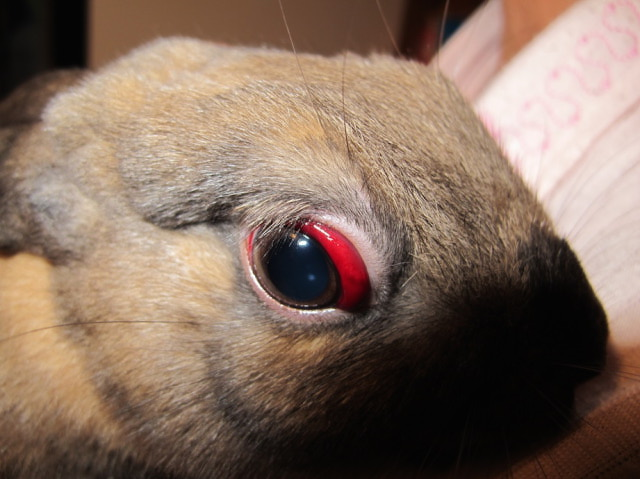 Bloody eyes dwarf rabbit
Question
Jasmin1 Jasmin2
Hello, doctor,
I
Bloody eyes dwarf rabbit
Question
Jasmin1 Jasmin2
Hello, doctor,
I
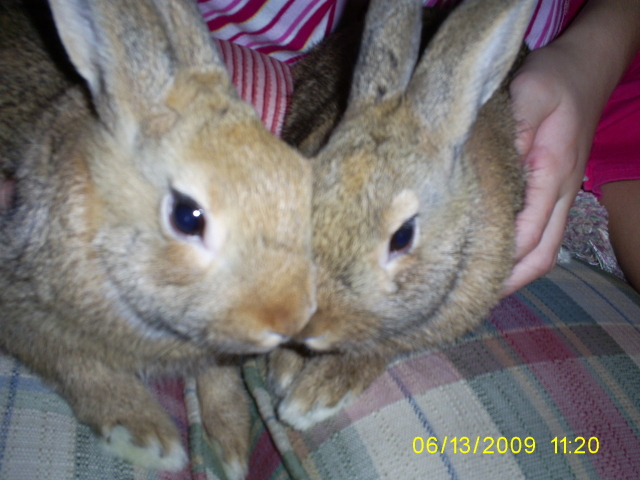 aggressive pregnant doe
QuestionQUESTION: Our doe has always been loving.
aggressive pregnant doe
QuestionQUESTION: Our doe has always been loving.
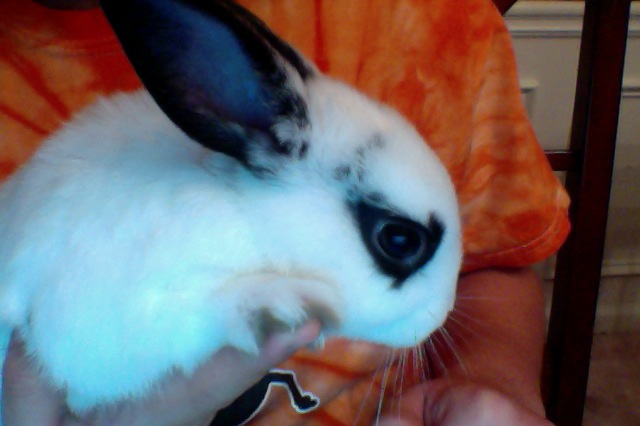 Pregnant or not?
Question
Arietta Oreo
Hi, Im Heather. I ow
Pregnant or not?
Question
Arietta Oreo
Hi, Im Heather. I ow
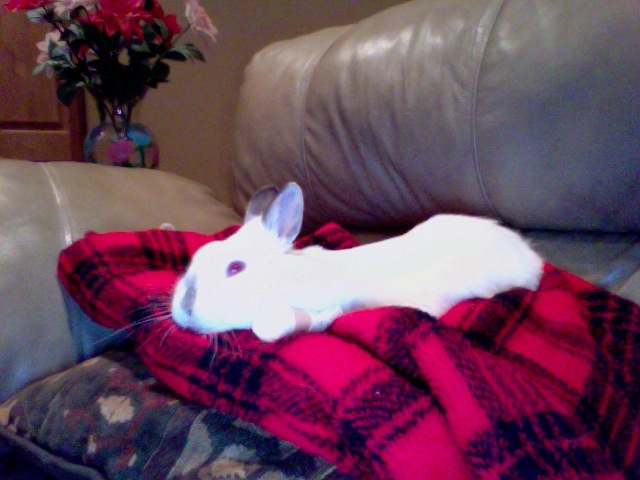 rabbit help.
QuestionSnowball, the rabbit.
QUESTION: We gave
rabbit help.
QuestionSnowball, the rabbit.
QUESTION: We gave
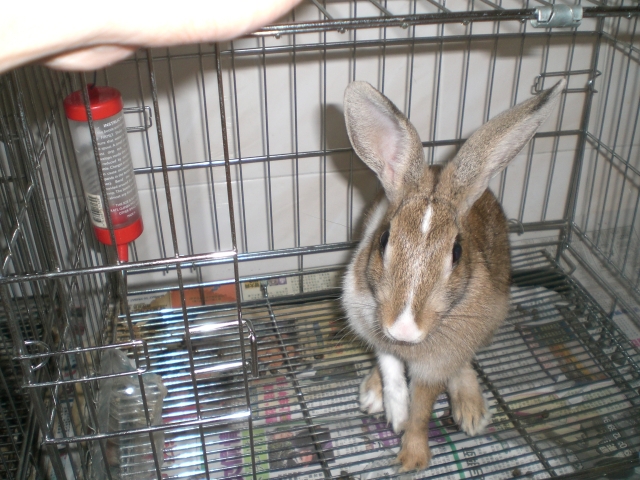 not hungry bunny
Question
Patchie Baby
I own a rabbit and she is
not hungry bunny
Question
Patchie Baby
I own a rabbit and she is